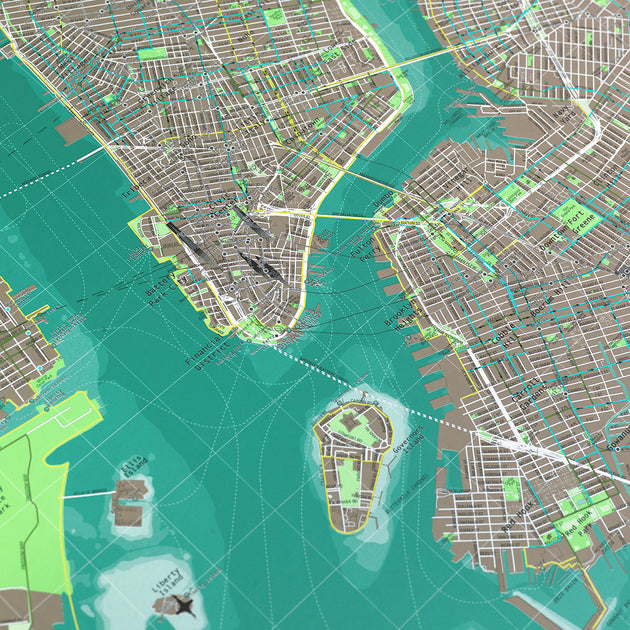
But this is like blaming the automobile for traffic congestion land price bubbles are a problem of human psychology, not maps. Another trope is that once the plan was set, greedy land speculators went on a tear - driving prices up. However, as compared to the short and narrow blocks south of Houston Street, the larger blocks of the plan, may have, in fact, helped reduce population density. The grid plan in the nineteenth century became a symbol of the evils of hyper-dense, unsanitary living because critics argued that it encouraged poor urban health. Myth #6: The Grid Plan Caused Too Much Density and Rampant Land Speculation The general elevation, though, remains the same as it was 400 years ago. North of 14th street was a jagged stretch of hills and valleys the former came down, the latter went up. Rather, implementation in practice was more of a “smoothing" than a leveling. This has left the impression that Manhattan was flattened by the grid plan. Images abound of small wooden houses perched atop lonely hills along 5th Avenue, as new roads obliterated natural Manhattan to make way for the grid. The tradition remained as the grid plan was implemented, especially as its 200’ blocks were conducive to two rows of 100’ lots. 25’ x 100’ was found to be a size both most suitable for living and working in a small merchant town and at the limits of building technology. Standardization in lot size began during the Dutch colonial period and continued into the nineteenth century. In fact, the 25 x 100 lot long predated the grid plan. Like many details that were omitted, it said nothing about lot size. It is a general assumption that Manhattan’s standard lot size of 25’ x 100’ was part of the 1811 grid plan. Myth #4: The Grid Plan Created Manhattan’s Small Lots Little known is the pivotal role Burr played in events that led directly to the street commission that gave Manhattan its grid. The company’s notorious neglect of its monopoly water responsibilities subjected New Yorkers to four decades of fire and disease before the city completed its pioneering Croton Aqueduct, the first piece in New York’s now vast and iconic modern water supply. When it comes to Aaron Burr and his role in the history of New York City (as opposed to the nation), the best known story is that he created the Manhattan Company in 1799 to supply the city with much-needed fresh water, but used most of the money the company generated for his prime and secret purpose, to start a bank that is now JPMorganChase. Manhattan’s future was sealed with scarcely a discussion. That is, not a plan but rather a “rush job” because the Commissioners demonstrated little interest in their responsibilities until the final months of their four-year term.


Analysis of the Commissioners’ actions shows that the grid plan was not a “plan” so much as a convenience to satisfy a deadline. Over the generations, great intention has been ascribed to the Commissioners that does not exist. Their personal writings practically ignore their work.

The document, dubbed “Explanatory Remarks,” explains little of the Commissioners’thinking. The only record the Commissioners left for posterity was an eleven-page document outlining the basics of the map that gridded Manhattan from North (now Houston) to 155th Streets. Myth #2: The Commissioners as Visionaries Randel was an employee of the Commissioners it was they - three venerable, nationally prominent men - who chose to adopt and expand Goerck’s plan Randel, a barely twenty-year-old Albany provincial, followed their instructions. While his efforts were Herculean, the plan derived not from Randel’s head, but rather was based directly - and without acknowledgement - on the work of late surveyor, Casimir Goerck, who had mapped out a large central section of rural Manhattan in the 1780s and 1790s. But the truth is that Randel did not create the plan.

The conventional wisdom is that the grid plan was created by John Randel, Jr., the chief surveyor for the commission charged with coming up with a future street plan, and who tirelessly trudged through the wilds of Manhattan in order to map it.


 0 kommentar(er)
0 kommentar(er)
